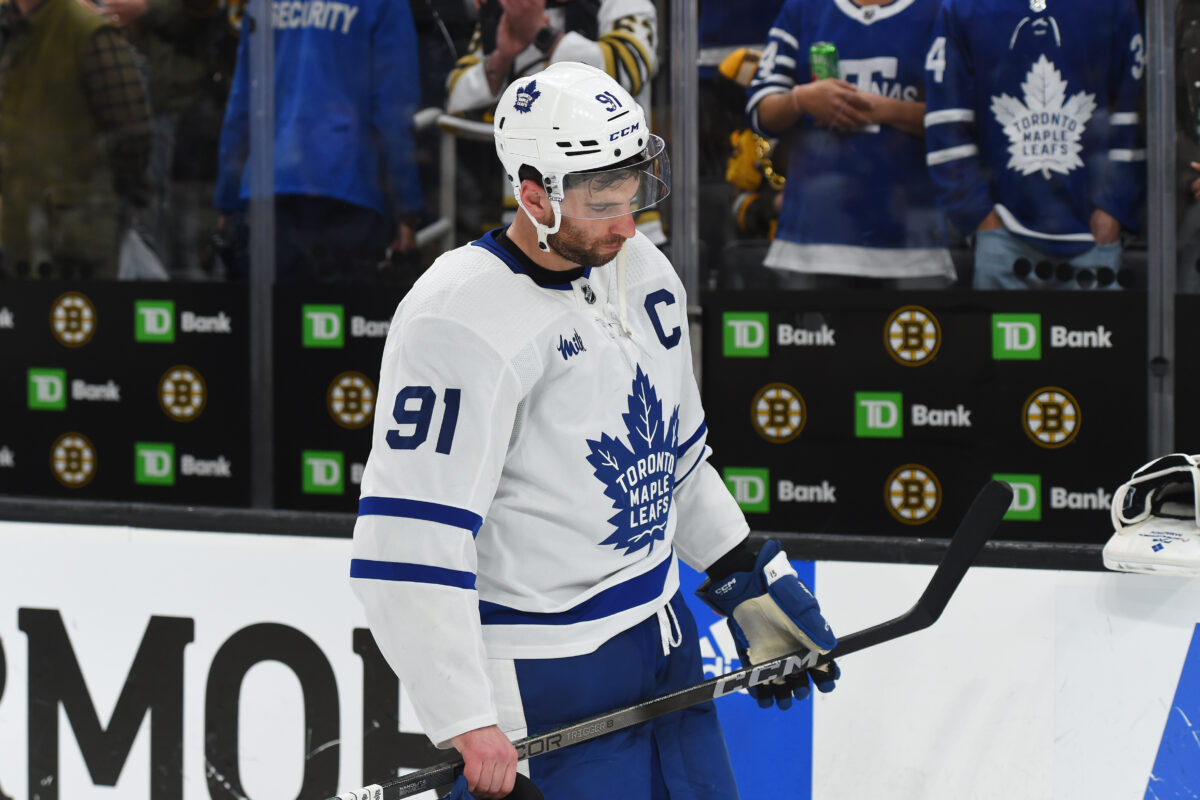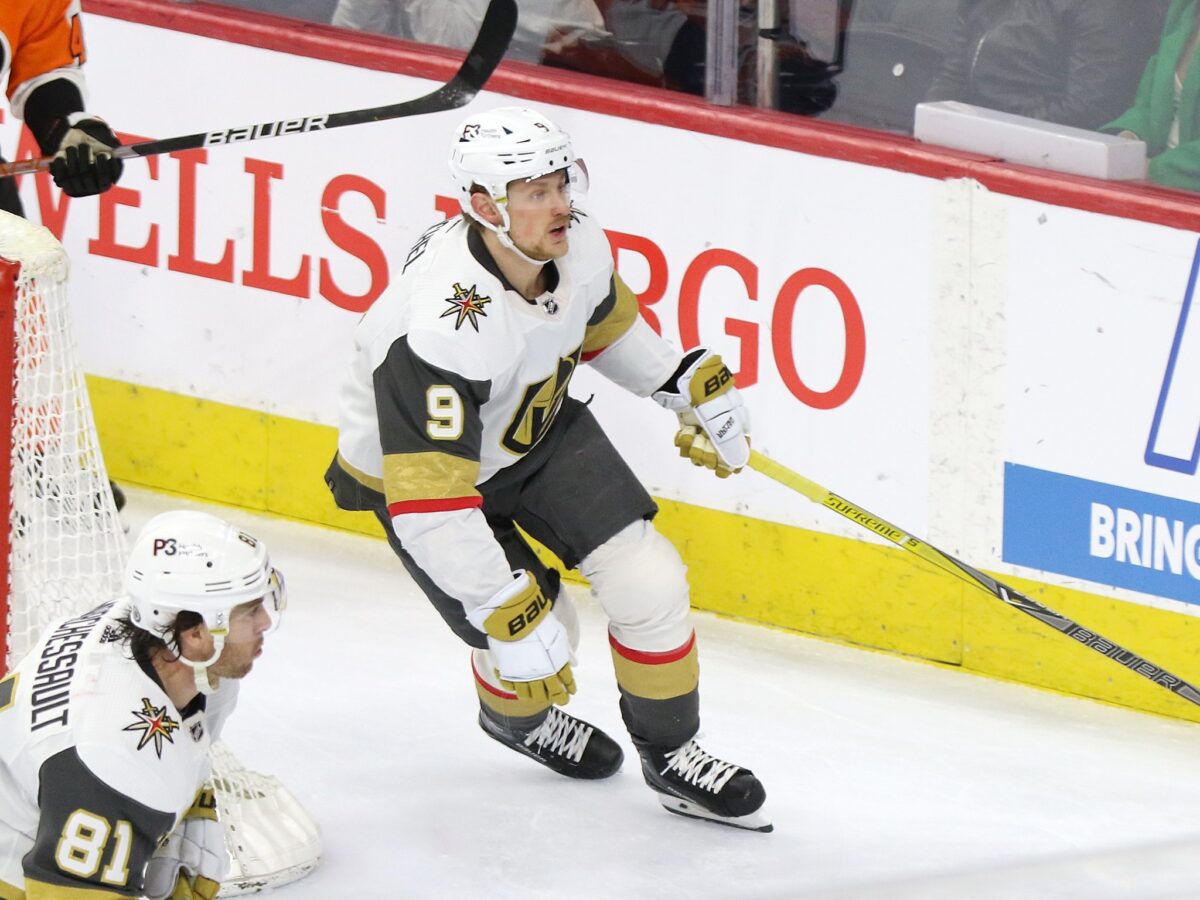Unfortunately, in today’s NHL, more often than not, players aren’t necessarily compensated fairly for their talents. Sometimes, they are signed to seemingly high-value contracts before they hit their stride and give their teams dreamlike scenarios with the salary cap — think of Jack Hughes, Igor Shesterkin, and Quinn Hughes. Each of the New Jersey Devils, New York Rangers, and Vancouver Canucks have been able to pump money into building a complete roster because their best players are on team-friendly contracts. As a result, they’re Cup contenders.
Enter the Toronto Maple Leafs, whose four most notable forwards — Auston Matthews, Mitch Marner, William Nylander, and John Tavares — take up well over $40 million annually, eating over half their salary cap. They’re undoubtedly a good team, having surpassed the 100-point mark in three consecutive seasons and placed third or better in their respective division every year since 2016-17. What they’ve been lacking to truly consider themselves a Stanley Cup contender, though, is adequate depth and complementary players. The guilty party in preventing them from those? Paying their star players what they’re worth.
The Importance of Depth Talent
The importance of depth scoring in the NHL can’t be understated. Yes, during the regular season, all eyes are on the league’s premier talents, and for good reason — there are only so many players who are able to reach superstardom. Those players still remain paramount in the playoffs, but there’s an increased reliance on depth talent to bring some offence as well. If the bottom half of a playoff team underperforms or plays poorly, chances are they won’t go very far in the postseason. Take the most recent Stanley Cup champions in the Florida Panthers; their third line of Anton Lundell, Eetu Luostarainen, and Vladimir Tarasenko combined for 10 goals and 34 total points in the 24 games they played together. Three of those goals and 10 of those points came in the Stanley Cup Final.
Related: Maple Leafs Working to Tip the Balance of Expectations & Challenges
The Maple Leafs, however, rely nearly completely on their premier talent to carry the load during the playoffs. This makes sense to an extent — they arguably have the largest number of $10-million-plus caliber players of any team in the NHL — but it’s a cap experiment that’s simply gone on for too long after being proven to hurt their ability to win.

Since 2021-22, Toronto has seen 11 forwards with at least 10 playoff games played. Of that group, seven players were consistently a part of the team’s top six: Matthews, Marner, Nylander, Tavares, Matthew Knies, Ryan O’Reilly, and Michael Bunting. That group scored a combined 42 goals and 106 points in 133 games. The remaining four players — David Kampf, Alex Kerfoot, Calle Jarnkrok, and Noel Acciari combined to score just nine goals and 15 points across 72 games. Their bottom six in the 2024 Playoffs tallied just three points (one goal and two assists) in their series against the Bruins. The previous season, and one in which they surpassed the first round, their bottom-six leader in points was Jarnkrok, who had three in 11 games.
What Is “Fair Value” for Star Players?
Let’s get one thing straight right off the bat — the Core Four, for the most part, is adequately paid relative to what they’re actually worth on the ice. The exception to this rule is Tavares, who was worth the price tag when he was first signed by the Maple Leafs in 2018. Each of Matthews, Marner, and Nylander are currently worth their weight in gold considering their talent. Matthews’ hefty $13.25 million cap hit is balanced by the fact that he’s a generational scoring talent who has turned into a perennial threat for 60-plus goals per season. Marner and Nylander are two of the NHL’s best wingers and have blossomed into yearly triple-digit point threats in their own right. This summer has seen two of those players — Matthews and Nylander — take on more prevalent roles with Matthews assuming the captaincy and Nylander shifting to the second-line centre position.
In recent years, asking for a fair contract has been an increasingly trendy behaviour among NHL superstars. Leon Draisaitl recently signed an eight-year extension for a league-record $14 million cap hit per year. Nathan MacKinnon is entering the second season of his eight-year, $12.6 million average annual value (AAV) contract. The last calendar year has seen six players sign contracts surpassing $9.5 million annually, four of which are max-length deals. Even young, somewhat unproven commodities in Brock Faber, Jake Sanderson, Lucas Raymond, Moritz Seider, and Owen Power have been reaping the benefits of a new wave of disposition towards getting paid.
Don’t get it twisted — there are still star players who are paid far below what they should be earning, though it’s important to note that the vast majority of these instances are players who are deep into their contracts already. The Hughes brothers — Jack and Quinn at least — are a good example of this. Despite being premier talents at their positions (with Jack being a top-five center in the league when healthy and Quinn as a perennial Norris Trophy candidate), the two are making $8 million and $7.85 million, respectively. Perhaps the lone exception to this rule is Sidney Crosby, who has remained at a fitting $8.7 million cap hit since 2008-09.
Recent Cup Winners Prove Frugality Wins Cups
Outside of the last two Stanley Cup champions in the Vegas Golden Knights and Florida Panthers, recent Cup winners have proven that eking every last penny from superstars is the only real way to win.
A Couple of Albatross Contracts Are Acceptable
We saw in 2022 with the Golden Knights that one albatross contract — in their case, Jack Eichel’s $10 million deal — doesn’t necessarily hinder a team from winning the Stanley Cup. The Panthers have two players on their payroll making eight digits. The key here, though, is moderation. It’s not the figure itself, but rather the percentage of the cap that’s being eaten up by one’s salary. In a league where the salary cap ever increases perennially, an eight-figure salary means less and less. Where $10 million took up 12.3% of the salary cap just three seasons ago, it now takes up 11.3%, and with the salary cap projected to rise significantly over the next couple of seasons, that ratio will lower even more.

On that token, the Golden Knights only had three players taking up more than 10% of their salary cap during their Stanley Cup run: Eichel (12.12), Mark Stone (11.52), and Alex Pietrangelo (10.67). Last season’s Panthers had three as well: Sergei Bobrovsky (11.98), Aleksander Barkov (11.98), and Matthew Tkachuk (11.38).
Prior to the last two seasons, that number was even lower. The 2021-22 Colorado Avalanche had two players surpassing 10% of their salary cap: Mikko Rantanen (11.35) and Cale Makar (11.04). The 2019-20 Tampa Bay Lightning had two as well in Nikita Kucherov (11.66) and Steven Stamkos (10.63), and Andrei Vasilevskiy was added to that list in 2020-21, taking up 11.66% of the cap as well, but that still left them with just three. The Maple Leafs this season have an unmanageable four contracts that exceed this percentage: Matthews (15.06), Nylander (13.07), Tavares (12.50), and Marner (12.39). It’s important to note that all four Toronto players take up a higher percentage than any other player on this list.
As a positive consequence of their relative frugality, each listed Cup winner was able to spend their remaining riches on worthwhile depth. The 2022-23 Golden Knights had 15 players making below the 10% threshold but above 2.5%. The 2023-24 Panthers, 2021-22 Avalanche, and 2020-21 Lightning all had 11. The 2024-25 Maple Leafs can only handle eight of those contracts. Their other money needs to be spent finding contractual gems who will far surpass the value of their contracts on the ice. It’s simply infeasible as a recipe for success.
What’s Next for the Maple Leafs?
In general, I think the Maple Leafs front office has learned from their mistake. Handing out two monstrous contracts to Matthews and Nylander in the past calendar year is likely where they’ll stop, meaning that one or both of Tavares or Marner will be hitting the open market next offseason with no intention of bringing them back to the Queen City. With rumours swirling of a lengthy Matthew Knies contract being on the docket, they must find a healthy salary number that fits both the player and the team, not just the former. There are already too many contracts on the Maple Leafs where that isn’t the case and the player is the sole beneficiary.
